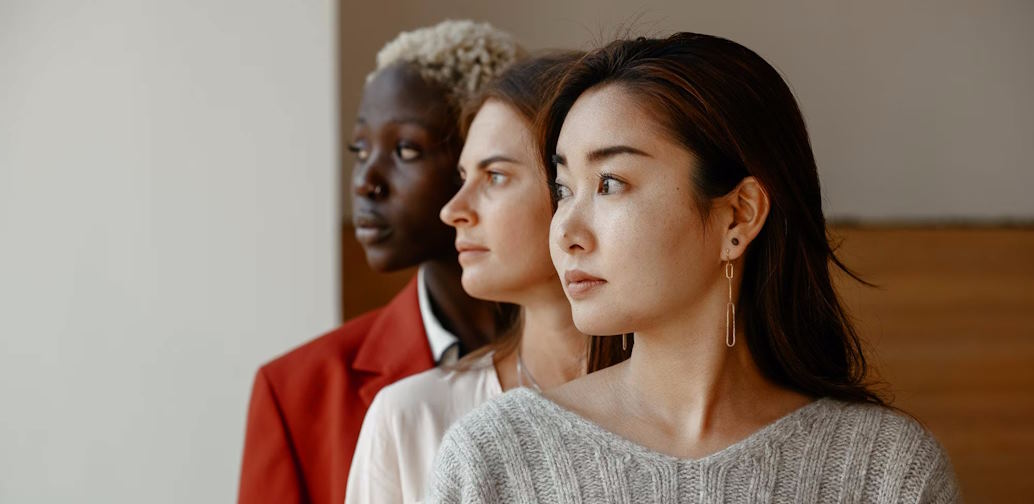Hairstyles have always been more than mere fashion statements; they are powerful symbols that reflect societal changes, cultural shifts, and individual identities. In the realm of popular culture, hairstyles have played a significant role in shaping trends, setting beauty standards, and capturing the spirit of different eras. This article explores the fascinating journey of hairstyles in pop culture, delving into the significant influences that have shaped and redefined the way we express ourselves through our hair.
The 1990s and 2000s: Grunge, Pop Princesses, and the Rise of Hip-Hop
The grunge movement and the popularity of messy, unkempt hairstyles
One of the most iconic and influential movements of the 1990s was grunge, which originated from the alternative music scene in Seattle. Alongside the rise of grunge music, the hairstyles associated with this subculture made a lasting impact on pop culture. Grunge hairstyles were characterized by their effortlessly messy and unkempt appearance, reflecting the anti-establishment attitude and nonchalant spirit of the era. The “bedhead” look, with its tousled and disheveled hair, became synonymous with grunge fashion. Both men and women embraced the trend, with men sporting long, unkempt hair and women opting for tousled waves or the “Lolita” hairstyle, characterized by messy buns and loose strands framing the face. This unconventional and rebellious approach to hairstyling challenged the polished and meticulously groomed looks of previous decades, becoming a visual representation of the grunge ethos.
Pop princesses and their impact on trends like the “Rachel” haircut and braided styles
While grunge represented the anti-establishment movement, the 1990s and 2000s were also marked by the rise of pop princesses who influenced hairstyle trends with their glamorous and polished looks. One of the most iconic hairstyles of the era was the “Rachel” haircut, popularized by Jennifer Aniston’s character on the hit TV show “Friends.” This layered, shoulder-length haircut became a global sensation, inspiring countless women to visit their hair salons in hopes of replicating the coveted style. Alongside the “Rachel” haircut, braided styles gained popularity, thanks to pop princesses like Britney Spears and Christina Aguilera. Braids, whether in the form of intricate updos or simple, bohemian-inspired styles, became a symbol of youthful femininity and added a touch of whimsy to the hair trends of the time. These pop-inspired hairstyles showcased a departure from the grunge movement, emphasizing a more polished and glamorous aesthetic.

The rise of hip-hop and the influence of urban hairstyles, including cornrows and shaved patterns
The 1990s and 2000s also witnessed the remarkable rise of hip-hop culture, which brought with it a distinct influence on hairstyles. Urban hairstyles, prominently displayed by hip-hop artists, became a form of self-expression and a way to showcase individuality. Cornrows, for example, became a widely popular hairstyle within the hip-hop community, with intricate braided patterns adorning the scalps of both men and women. This style not only reflected cultural heritage but also symbolized unity and strength within the community. Shaved patterns, often seen in combination with cornrows, became a way to add further artistic flair to hairstyles, with intricate designs etched into close-cropped hair. These urban hairstyles represented a bold and unapologetic statement, transcending traditional beauty standards and embracing the creativity and diversity within the hip-hop culture.
The Present Era: Diversity, Empowerment, and Self-Expression
The embrace of natural hair and the celebration of diverse textures and styles
In the present era, there has been a powerful shift towards embracing natural hair and celebrating the diverse textures and styles that exist within it. For far too long, mainstream beauty standards promoted a narrow definition of beauty, often favoring Eurocentric ideals. However, in recent years, there has been a remarkable movement towards inclusivity and representation. People of all backgrounds are reclaiming their natural hair, rejecting the notion that certain textures or styles are more desirable than others. From beautiful afros to luscious curls, locs, and braids, there is a growing appreciation for the versatility and uniqueness of natural hair. This shift not only promotes self-acceptance but also fosters a sense of empowerment and pride in one’s cultural heritage.

The influence of social media and influencers on hairstyle trends
Social media has revolutionized the way we consume and shape trends, and this holds true for hairstyle trends as well. Platforms like Instagram, YouTube, and TikTok have become breeding grounds for hairstyling inspiration. Influencers and content creators share their knowledge, creativity, and personal style, influencing the hairstyles embraced by millions of followers worldwide. From step-by-step tutorials to showcasing innovative color techniques and unique cuts, social media has democratized hairstyling, allowing individuals to experiment and explore new looks like never before. The accessibility of information and the ability to connect with diverse communities has paved the way for a rich tapestry of hairstyle trends that cater to a wide range of preferences and identities.
The focus on self-expression and individuality through hair color, cuts, and accessories
In the present era, there is a resounding emphasis on self-expression and individuality when it comes to hairstyling. People are using their hair as a canvas to tell their stories, express their personalities, and challenge societal norms. Vibrant hair colors have become a form of artistic expression, with individuals confidently sporting shades ranging from pastels to bold neon hues. Unique haircuts, from edgy pixie cuts to asymmetrical bobs, are celebrated for their ability to reflect personal style and challenge traditional beauty standards. Accessories like headscarves, hairpins, and barrettes are also experiencing a renaissance, allowing individuals to add their own flair and elevate their hairstyles. This focus on self-expression through hair allows individuals to authentically express who they are, celebrating their individuality and empowering others to do the same.

